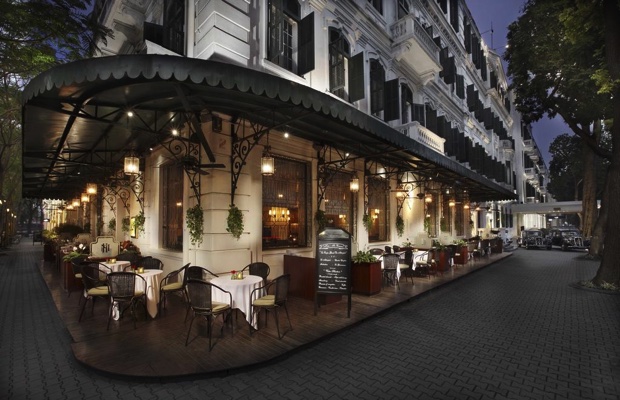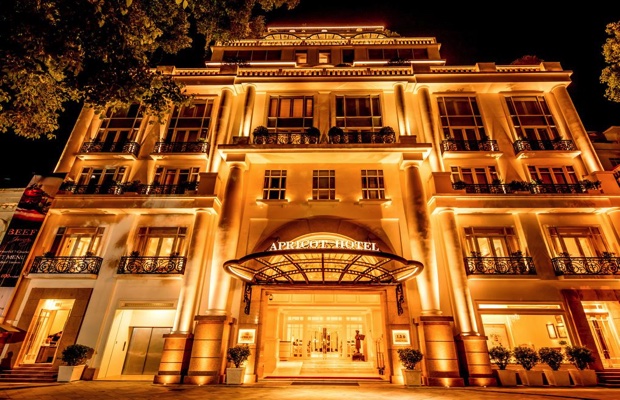Imperial Citadel of Thang Long
Imperial Citadel of Thang Long
Vietnam
Hanoi
Hanoi Travel Guide
Book Tour & Activities
Your tour in Hanoi.
Book your stay
Your hotel in Hanoi.
Overview
The Imperial Citadel of Thang Long is an intriguing relic of Vietnam’s history and, signifying its historical and cultural importance, is now a UNESCO World Heritage Site. Standing 40 metres high, the central flag tower is the most recognizable feature of the Imperial Citadel and is often used as a symbol of Hanoi. This was the centre of ancient Hanoi and served as the political centre for eight centuries. Located in Ba Dinh, the Imperial Citadel of Thang Long is close to many other tourist attractions.
The Imperial Citadel of Thang Long, is an intriguing relic of Vietnam’s history and, signifying its historical and cultural importance, was made a UNESCO World Heritage Site in 2010. Also known as the Hanoi Citadel, many artefacts and items dating back to between the 6th and 20th centuries were excavated in 2004, including foundations of old palaces, ancient roads, ponds and wells.
On top of these discoveries, archaeologists also found bronze coins, ceramics and pottery from China and many places in Asia, all of which demonstrate a close trading relationship in the area. Visitors should head for the display room that features interesting excavated items and mock-ups of the citadel itself.
History of Imperial Citadel of Thang Long
The royal enclosure was first built during the Lý dynasty (1010) and subsequently expanded by the Trần, Lê and finally the Nguyễn dynasty. It remained the seat of the Vietnamese court until 1810, when the Nguyễn dynasty chose to move the capital to Huế. The ruins roughly coincide with the Hanoi Citadel today.
The royal palaces and most of the structures in Thăng Long were in varying states of disrepair by the late 19th century with the upheaval of the French conquest of Hanoi. By the 20th century many of the remaining structures were torn down. Only in the 21st century are the ruin foundations of Thăng Long Imperial City systematically excavated.
In mid-1945 the Citadel was used by the Imperial Japanese Army to imprison over 4000 French colonial soldiers captured during the Japanese coup d'état in French Indochina in March 1945.
The central sector of the imperial citadel was listed in UNESCO's World Heritage Site on July 31, 2010 at its session in Brazil, as "The Central Sector of the Imperial Citadel of Thăng Long – Hanoi".
Relics
The royal palaces and edifices were largely destroyed in the late 19th century. The few remaining structures within the royal compound are the Doan Mon gate, marking the southern entrance to the royal palace, the Flag Tower, the steps of Kinh Thiên Palace and the Hậu Lâu (Princess' Palace).
Remains of the Imperial City were discovered on the site of the former Ba Đình Hall when the structure was torn down in 2008 to make way for a new parliament building. Various archaeological remains unearthed were brought to the National Museum to be exhibited. Thus far only a small fraction of Thăng Long has been excavated.
The ancient site was the political centre of the country for 13 consecutive centuries and served as the capital of Vietnam for eight centuries. A notable attraction in the Imperial Citadel of Thang Long was the Hanoi Flag Tower, a renovated 40-metre-tall stone fortress offering expansive views of Ba Dinh Square and Hanoi City Centre.
Located in Ba Dinh District, entrance to the Imperial Citadel of Thang Long is priced at VND 30,000 and it is open from 08:00 to 17:00 every day except Monday. This prominent site is also within a 15-minute walk from attractions such as Quan Thanh Temple, Vietnam Military History Museum and Cua Bac Church.
Imperial Citadel of Thang Long
- Opening Hours: Tuesday – Sunday 08:00 – 17:00
- Location: 9 Hoang Dieu, Dien Bien, Ba Dinh District, Hanoi
- Price Range: VND 30,000
Video Travel Inspiration
See Imperial Citadel of Thang Long on Map
Most Popular Cities

Siem Reap
Cambodia
Ho Chi Minh City
Vietnam
Beijing
China
Paris
France
London
United Kingdom
New York
USA
Tokyo
Japan
Bangkok
Thailand
Seoul
South Korea
Vientiane
Laos
Yangon
Myanmar
Washington DC
USA
Los Angeles
USA
Ottawa
Canada
New Delhi
India
Singapore
Singapore
Kuala Lumpur
Malaysia
 English
English French
French Khmer
Khmer Thai
Thai Vietnamese
Vietnamese Chinese
Chinese Korean
Korean German
German Japanese
Japanese Italian
Italian Russian
Russian Spanish
Spanish Dutch
Dutch Indonesian
Indonesian Malay
Malay


































